For February 2006
What the writers have been enjoying, watching, reading, hearing, eating, viewing, and digesting for the past 28 days.

Andrea Echeverri, the husky vocalist for Colombian rock band Aterciopelados, has produced a serious meditation on romantic love and motherhood with her Grammy-nominated self-titled solo debut. Electronica and soothing acoustic guitar establish a steady groove for Echeverri’s wordplay and metaphorical devices, which blur the distinctions between the searing emotional rush of requited love and the maternal bliss that accompanies the birth of a child. These lovely songs will captivate both old fans and new listeners. —Patrick Ambrose
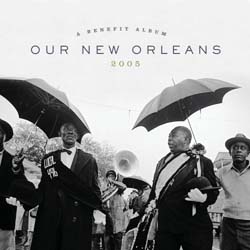
Our New Orleans 2005 is a vivid pastiche of 16 tracks by the Crescent City’s better known musical legends such as Allen Toussaint, Dr. John, Irma Thomas, Buckwheat Zydeco, Wild Magnolias, Dirty Dozen Brass Band, and Randy Newman, who performs with the Louisiana Philharmonic. Author Richard Ford and NPR’s Nick Spitzer provide poignant liner notes. Net proceeds from the sale of the CD will be donated to Habitat for Humanity and a portion of those funds will be earmarked to help provide housing for homeless musicians. Sweet music and good deeds; what could be better? —Robert Birnbaum

While passion is such an important element to so much classical music, the real trick is finding recordings performed with passion. Though when you do, you’ve got a treasure on your hands. And this is undeniably the case with guitarist Christopher Parkening’s (who can shred, by the way) recording of Rodrigo’s Concierto De Aranjuez. The full, sweeping entry of the orchestra toward the end of the second movement is an emotional ton of bricks. —Andrew Womack
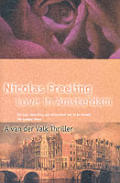
A bad cold chained me to the bed for a week, but before I succumbed I ran to Partners & Crime bookstore in Greenwich Village and stocked up on international detectives. Nicolas Freeling’s Love in Amsterdam won lots of mystery prizes, and for 30 pages I wanted to throw it away—the skittery voice, the joshing detective, it all seemed too much—then it suddenly took off and turned out outstanding. Rebecca Pawel’s Tejada series, set in ’30s and ’40s Spain, is a string of jewels; start with Death of a Nationalist and spend chapters struggling to trust a narrator who’s just shot an innocent. Andrea Camilleri’s Montalbano books are even better—light but steely, tight and funny; The Smell of the Night is the most recent. Time for the cheesy kicker? Crime may not pay, but it can cure the common cold. Kapow! —Rosecrans Baldwin
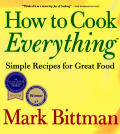
Gobsmacked by the cost of eating out (and eating well) in New York City, I have spent the last year teaching myself how to cook with Mark Bittman’s How to Cook Everything. It’s a thousand pages of basic, idiotproof techniques, like how to buy lamb or saute a chicken cutlet, alongside a good complement of simple recipes with multi-culti variations that range from gefilte fish to fried okra. The ingredient lists are short and the instructions are generous, so even the most novice of chefs can feel confident of turning out a good meal in less than an hour. —Liz Entman
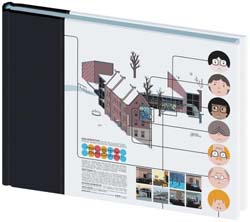
I am in awe of Chris Ware lately, the cartoonist (graphic novelist? writer? genius?) who made Jimmy Corrigan and just released a prelude to a new book, Rusty Brown, in The ACME Novelty Library #16. The painstaking hours he must spend on each drawing, even his smallest panels, appeals to me a great deal; it reminds me of the hyper-precision of Dürer, and, strangely enough, matches the kind of mixture of meticulousness and generosity I try to pour into my own work. The ACME Novelty Library #16 is self-published, too, and it is always exciting to see an artist of Ware’s caliber try to reach readers outside established channels. But most of all Rusty Brown is about tragic nerds in station wagons, about bleakness and isolation, and the horrors and escape routes of kids. —Anthony Doerr

First: Buffalo aren’t endangered. Second: They’re delicious. Their dark-red meat has a rich, beefy flavor with less fat and cholesterol than poultry. Substitute it for beef in any recipe, but be sure not to let it dry out—if you’re not braising or stewing it, keep it medium-rare and use a lower flame. Oh, and third: Most buffalo are raised humanely and organically, allowed to eat grass and roam instead of spending their lives parked on a feedlot. Look for it in the beef section at any major grocery store. —Liz Entman

When I first moved to New York, I fantasized about eating. Every night was my goal: The bar at Gramercy Tavern on Monday, Bouley for Tuesday fancy, Beisl for a Saturday beer lunch. This was how I would measure my success: If I could afford to tip 20 percent seven nights a week, I was made. My favorites, then, based on occasion, location, mood, or drunk (locals will note emphasis on the Union Square area, only because it’s my favorite part of the city): late lunch: Oyster Bar at the counter; pre-bar crawl: Grotto; tuna melt and a crossword: Eisenberg’s; solo dining on your birthday: Prune or Beppe; winter: Modern’s barroom; nice night out: Gramercy Tavern in the bar; beer and ping-pong before lunch: Iona; burger with jalapenos before nap: Sparky’s; sole meuniere: L’Absinthe; Slopeside: Applewood; post-engagement, pre-wedding: Daniel; three a.m. croque monsieur: L’Express; experimental parents picking up the check: Craft; celebrating promotion: Blue Hill. —Rosecrans Baldwin

For years, diet food really made good on the first half of its name. These days, Lean Cuisine has gotten so tasty I eat it even when I’m not dieting (my favorites: Chicken Carbonara and Chicken with Basil Cream Sauce). See, I don’t cook, and if I’m not careful, I’ll scarf my paycheck before dinnertime. This helps save money. And who knows? Maybe I’ll even lose weight. —Sarah Hepola
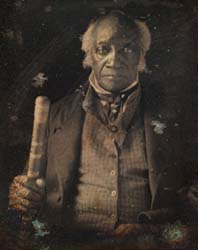
It’s the end of Black History Month, and what better way to celebrate than to learn a little more about the “peculiar institution” that was slavery and how it changed this country? If you’re in New York, hightail it to the New-York Historical Society’s Slavery in New York exhibition, a fascinating look at slave holdings and black life in Manhattan from the earliest colonial days into the mid-1800s. Colorful, detailed maps of the growing city point out locations key to the slave culture and aging documents cast new light on the times. Get there quick: The exhibit is so good, they’ve extended it until March 26. If you’re not in New York, check out Slaves in the Family, the amazing true story of South Carolinian Edward Ball’s quest to learn more about the slaves his ancestors held for generations. —Kate Schlegel

For anyone between the ages of 28 and 35 who lives in New York City, this may come as a surprise: People your age (who live elsewhere) own homes. Yes—real live houses, just like your parents have. No neighbors clog-dancing above their heads, no landlords waving eviction papers. But until you’re ready to enter the real world beyond the Hudson, you can pretend you’re in the market with Zillow, which shows you home prices in neighborhoods across the country based on recent sales, square footage, and amenities. Good fun, but once they add a “buy now” button, look out. —Andrew Womack

The other recommendations in this collection might be more exciting, but this is the only one that can earn you a few bucks. If you’ve just outgrown your piggy bank, check out the Orange Savings Account from ING Direct. Why? The interest rates are much higher than at most other banks. Everything’s done online and your interest earnings add up on a nice little counter. And then you can squander them any way you want. Now that’s something to get excited about. —Pitchaya Sudbanthad
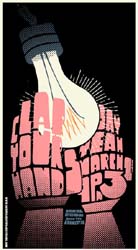
There are probably beautiful gig posters for the special band in your life, and Gigposters.com is the place to find them. What about these posters? They’re usually made by young, talented graphic artists. They’ll probably look good on your wall. And there’s a small chance some of these will have eBay potential years down the road (a 1966 Beatles poster recently sold for $132,000). Check out works by Jay Ryan and Tara McPherson, among others. And if you’re at SXSW this year, stop by Flatstock. —Pitchaya Sudbanthad

Even though prices of high-definition televisions are falling faster than bejeweled Italian ice dancers, you still might be putting off the investment because you don’t want to pay the extra monthly bucks for the limited menu of HD channels offered by your satellite or cable company. (Do you really need to see reruns of Monster Garage six times a day in startling clarity?) But if you live within an hour or so of a decent-sized city and have an HDTV with a built-in tuner, you can probably enjoy over-the-air high-def signals provided by the broadcast networks for a one-time investment of fifty bucks. I was skeptical, but this set-top antenna, no more than a foot tall and a foot deep, is easy to install and provides a picture as good as or better than the one from the HD satellite stations. There are caveats—where I live in Chicago the CBS signal isn’t strong enough to reach me, and you’ll probably endure minor weather disruptions—but if you’re within the signal area, you’ll be amazed at the pictures you can pluck out of the air for free. —Kevin Guilfoile
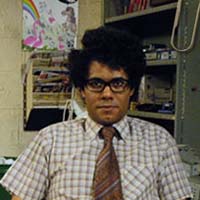
Finally, nerd humor gets beyond Robert Carradine and Steve Urkel with The IT Crowd, the new TV comedy from Graham Lineman (Father Ted). The setting: the basement tech room at a faceless corporation. The characters: two IT guys, their new, computer-illiterate manager, a boisterously megalomaniacal CEO, and a string of employees who get no help with their computer woes. (When they call, instead of “Hello,” they hear, “Did you try turning it off and on?”) For now, American audiences will have to rely on file sharing to get ahold of the show. And if you don’t know how any of that stuff works, just ask a nerd. —Andrew Womack
